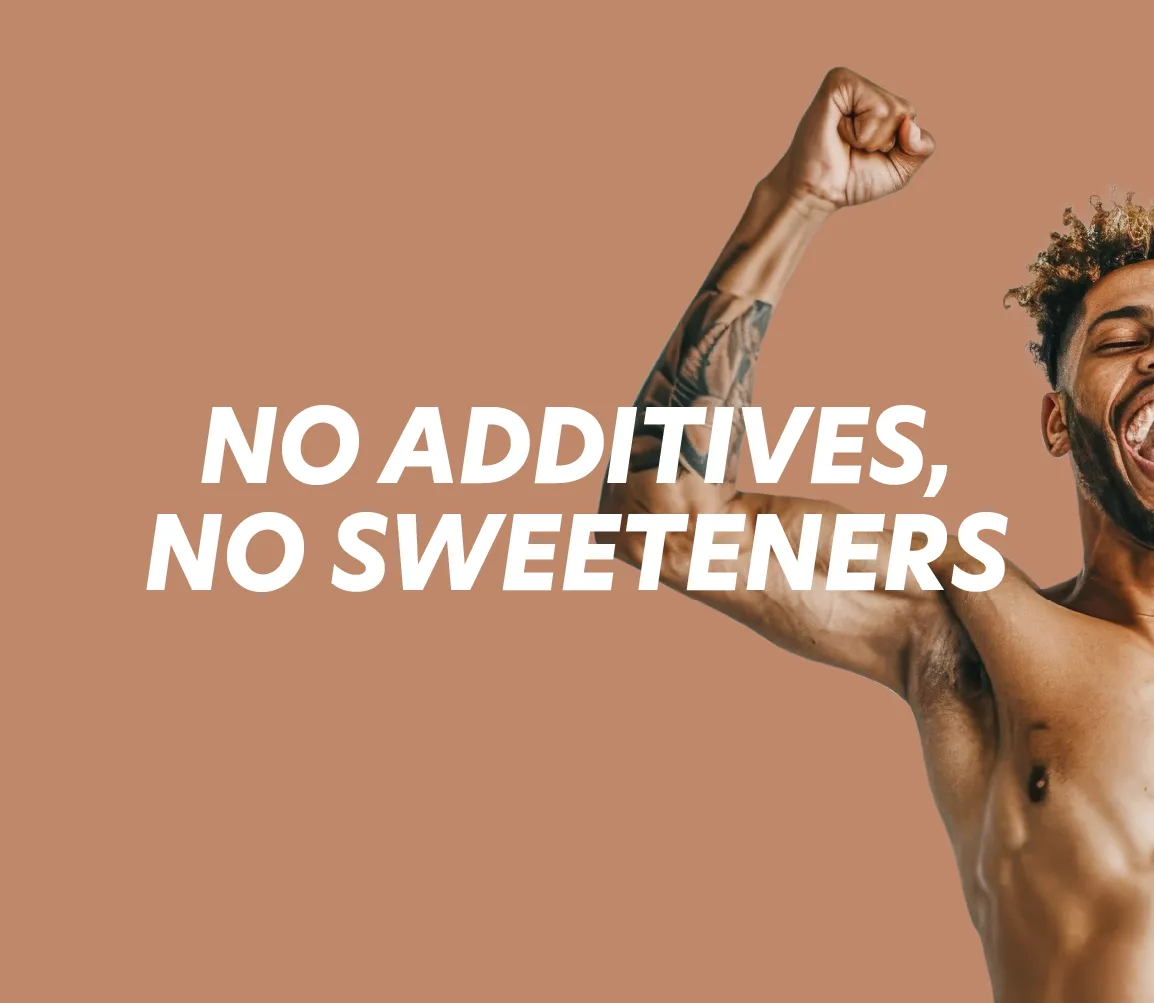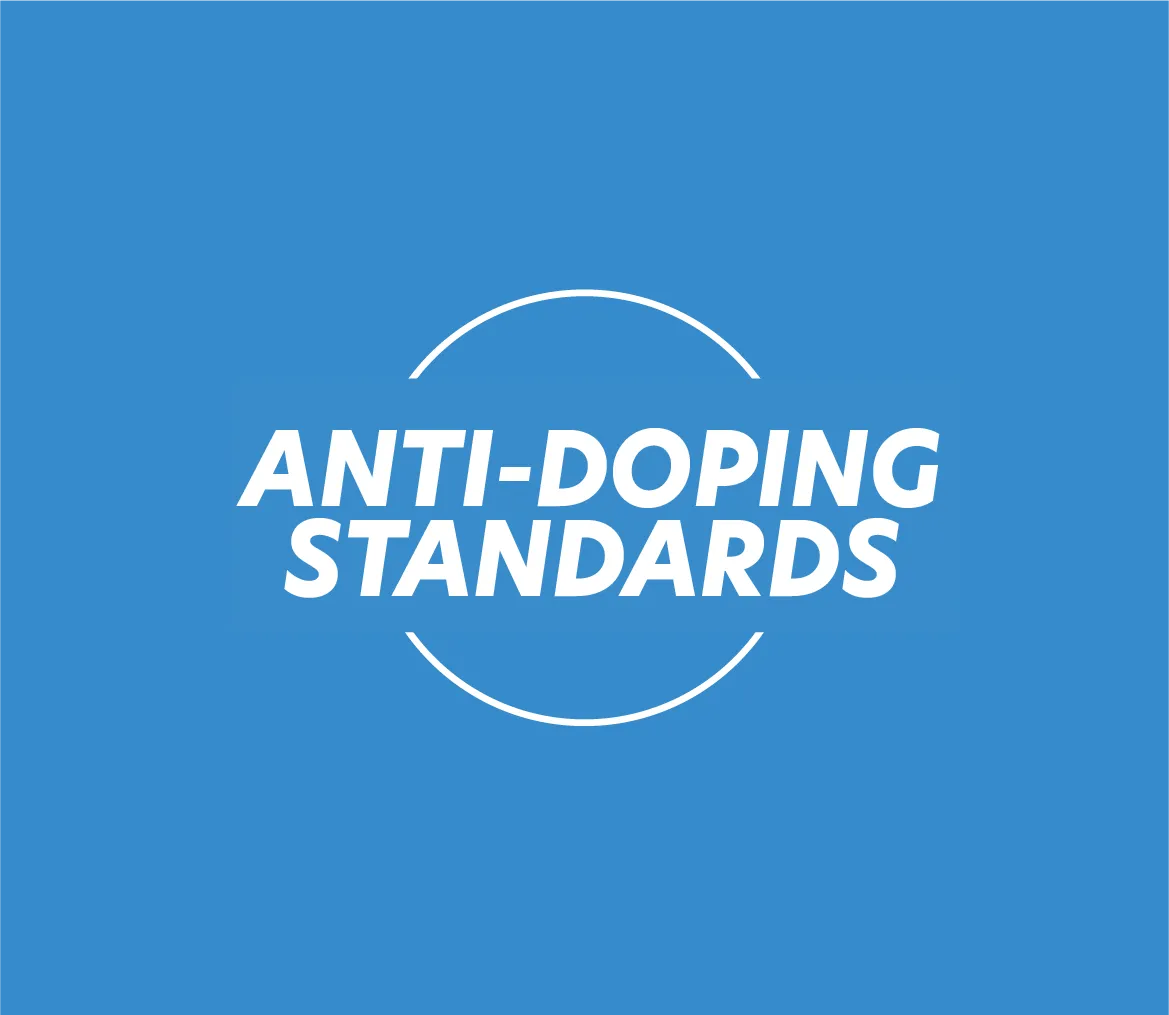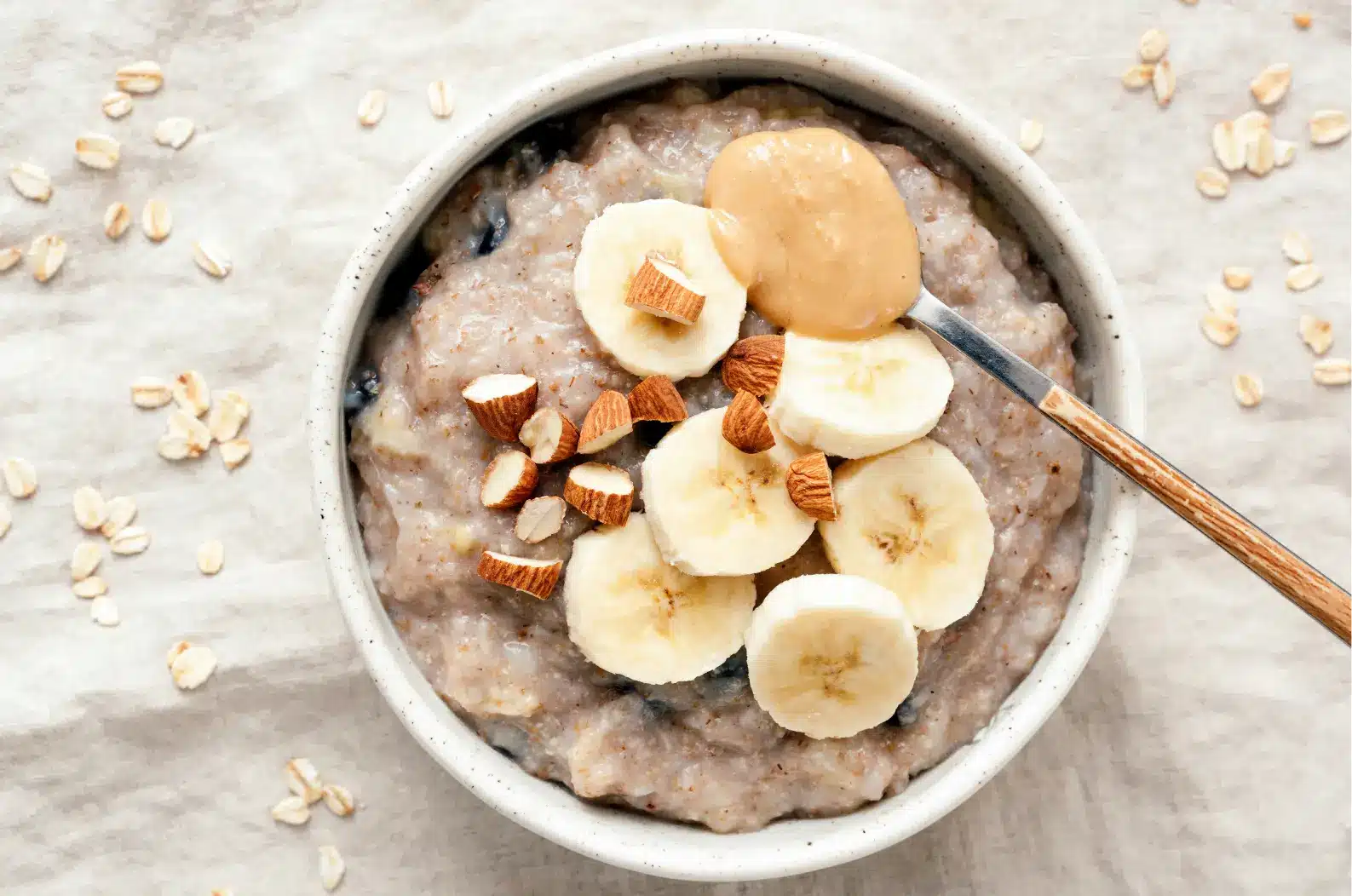Are you looking to gain muscle and wondering if oatmeal has a place in your mass-building diet plan? The answer is yes. Oatmeal is an interesting food for athletes looking to build muscle mass in a healthy and sustainable way.
But first, a quick definition: what is mass gain in bodybuilding? It's a period during which we seek to create a caloric surplus in order to promote muscle growth. This requires a rich, balanced diet and appropriate training. The aim is to gain weight gradually, giving priority to lean mass and limiting fat gain.
That's where oatmeal comes in. Thanks to their interesting nutritional profile, they can help as part of a mass gain diet. Rich in complex carbohydrates, fiber and plant proteins, they provide the necessary energy while promoting digestive health.
Our team will explain everything in this article.
Contents
- What are carbohydrates?
- Why eat oatmeal for weight gain?
- How can you incorporate oatmeal into your diet for weight gain?
- Other macronutrients of interest for mass gain
- To find out more :
- How do β-glucans specifically impact satiety and insulin resistance?
- What is the optimal pre/post-workout timing for different intensities?
- How do oatmeal interact with creatine and other supplements?
- How does digestibility vary according to profile (SIBO, sensitivities)?
- How does oat protein bioavailability compare with that of other cereals?
- What impact do excess calories have on leptin and ghrelin?
Before getting started, a quick reminder is in order, but you can skip this section if the role of carbohydrates is already clear to you.

What are carbohydrates?
Carbohydrates are essential macronutrients for the body to function properly. They play a crucial role in energy production, blood sugar maintenance and overall health.
When we eat carbohydrate-rich foods such as rice, pasta, wholemeal bread or sweet potatoes, our body converts them into glucose, the main fuel for our cells. This glucose is then used by muscles, the brain and other organs to keep them functioning.
Carbohydrates are particularly important for athletes and people who engage in intense physical activity. They help maintain stable energy levels during exercise, and promote muscle recovery afterwards. That's why it's advisable to consume carbohydrates before, during and after strength training or endurance sessions.
In addition to their energy role, carbohydrates have an impact on the secretion of insulin, the hormone that regulates blood sugar levels.
Excessive consumption of carbohydrates, especially refined sugars, can in the long term encourage the development of metabolic diseases such as type 2 diabetes or obesity.
It's therefore essential to focus on complex carbohydrates, found in whole grains, legumes and vegetables. The latter are rich in fiber, which slows glucose absorption and prevents glycemic fluctuations. Oatmeal is a good example.
High-GI carbohydrates (sucrose, glucose) are not always the enemy! When consumed in conjunction with intense effort (during and/or after), they are very useful for athletes and should not be avoided.
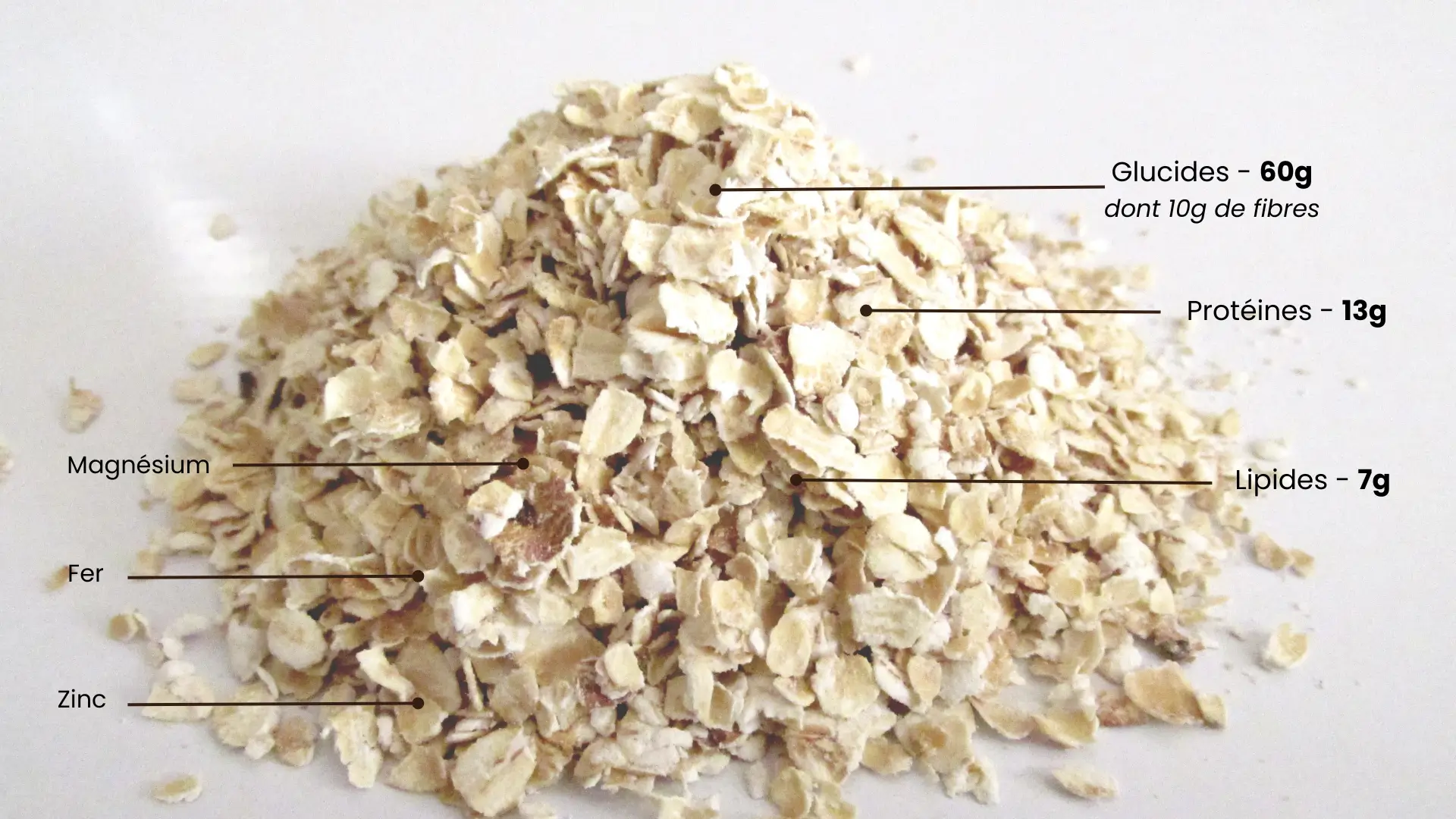
Why eat oatmeal for weight gain?
What are the nutritional benefits of oat flakes?
Oat flakes are a staple food for bodybuilding athletes, for a number of reasons. Firstly, their nutritional composition is particularly interesting. On average, 100g of oat flakes contain :
| Nutrients | Quantity |
|---|---|
| Carbohydrates | 60 g |
| Of which fibers | 10 g |
| Protein | 13 g |
| Lipids | 7 g |
| Vitamins | B1, B6, E |
| Minerals | Magnesium, Iron, Zinc |
Oat flakes are rich in complex carbohydrates. Unlike refined sugars, these carbohydrates are absorbed gradually by the body, providing lasting energy and avoiding blood sugar spikes and rapid storage, in the form of fat if glycogen reserves are full.
They also stand out for their high fiber content. Fiber helps you feel full, regulates transit and promotes healthy intestinal flora. These are important factors when you're looking to increase your calorie intake or simply maintain good health.
Oat flakes are also packed with vitamins and minerals essential for healthy body function and sports performance: B vitamins for energy metabolism, vitamin E with antioxidant properties, magnesium for muscle function, iron against fatigue and zinc for immunity and protein synthesis.
To make the most of the nutritional benefits of oat flakes, choose high-quality, organic, untreated oat flakes. You can choose to eat them as they are or cooked.
Note that cooking will naturally increase the associated GI. It increases the GI by around 5 points (from 55 to 60). This difference remains moderate, but may slightly influence the speed of carbohydrate digestion.
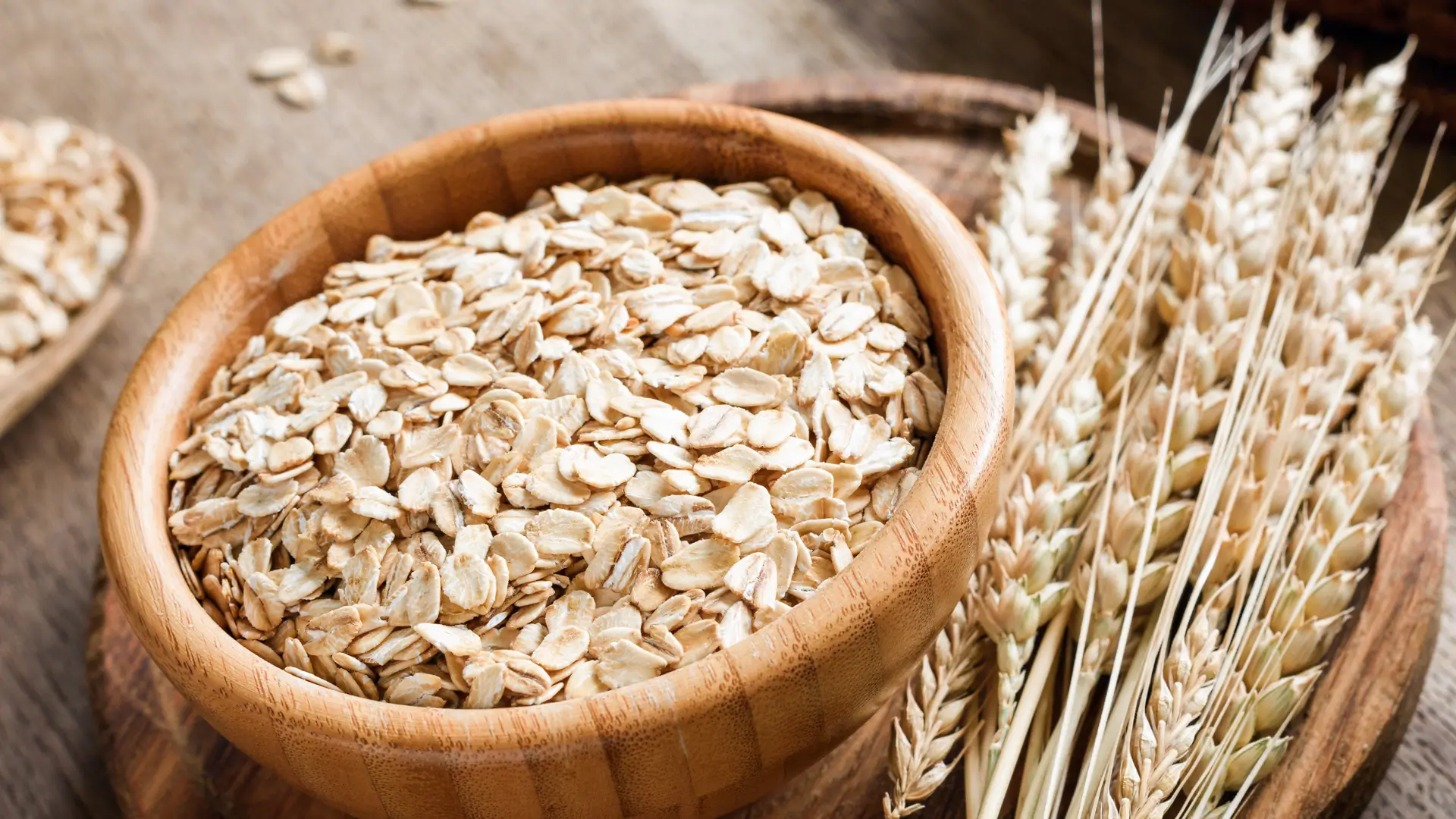
What are the benefits of oatmeal for mass gain?
At around 350 kcal per 100g, oat flakes have an interesting caloric content, making iteasy to increase your total energy intake for the day. To create a caloric surplus conducive to weight gain, you need to consume more calories than you expend.
What's more, the medium-to-low glycemic index of oat flakes is a real advantage over other carbohydrate sources. This means they provide long-lasting, stable energy, ideal around intensive workouts to support muscle growth.
Finally, during periods of mass gain, it is essential to have sufficient carbohydrate intake to support training and recovery. With 60g of carbohydrates per 100g, oat flakes are an excellent source of carbohydrates for athletes. Combined with other protein sources, they help maximize muscle mass gains(1) while limiting fat gain.
How can you incorporate oatmeal into your diet for weight gain?
What are the different types of oats and how do I choose them?
There are several forms of oats for human consumption, differing in appearance and texture. The main ones are :
- Instant rolled oats (the most common in Europe): thinner and pre-cooked, they are quicker to prepare. However, their glycemic index is slightly higher due to the processing and pre-cooking.
- Traditional oat flakes: thick and crunchy, they need longer cooking time if you want to soften them, as they are not pre-cooked.
- Oat flour: obtained by grinding the flakes, it can be used in baking or to thicken preparations. Its glycemic index is similar to that of instant flakes, and it is generally pre-cooked.
Whichever type of oats you choose, it's important to ensure traceability, with preference given to local, certified organic crops. Their low glycemic index enables a gradual release of energy, while their high fiber content promotes satiety and digestive health.
What are the best ways to eat oat flakes?
There are many ways to incorporate oatmeal into your diet. Here are a few ideas:
- Breakfast: mixed with plant or animal milk, fresh fruit, oilseeds and a protein source (whey, fromage blanc, eggs...).
- As a pre- or post-workout snack: in the form of porridge, homemade bars or in protein smoothies. This is particularly relevant as it is often recommended to eat more meals during periods of weight gain.
- In sweet or savoury recipes: pancakes, cakes, breads, gratins, vegetable dumplings...
Ideally, oat flakes should be eaten raw or lightly cooked, to preserve their nutritional qualities. If you do cook them, opt for short, low-temperature cooking (in milk over low heat, for example).
As far as quantities are concerned, although they can vary widely from person to person, it is recommended to consume around 50 to 100g of oat flakes a day, depending on your energy needs and goals. This represents around 4 to 8 tablespoons.
If you're a runner, you'll find on our site.., oat-flake-based recipes for runners.
While oatmeal is an excellent food for mass gain, mainly on the carbohydrate side, it's important not to neglect the other macronutrients essential for muscle growth and overall health. It's these other macronutrients that we'll focus on in the final section of this article.
How to avoid bloating?
Bloating with oat flakes stems from several factors: the richness of soluble fiber (notably β-glucan), the presence of fermentable FODMAPs, phytates that disrupt digestion, and sometimes a sensitivity to avenin (oat protein).
- Soaking: Soak for 6-8 hours in water + 1 teaspoon cider vinegar. Discard soaking water, which contains phytates.
- Grind the flakes: Mixing the flakes before consumption = almost total disappearance of bloating according to feedback.
- Add to a hot liquid: never cold to avoid digestive shock.
- Gradual introduction: Start with 30g/day + plenty of water
If digestion problems persist, you may be sensitive to avenin. Try other cereals!
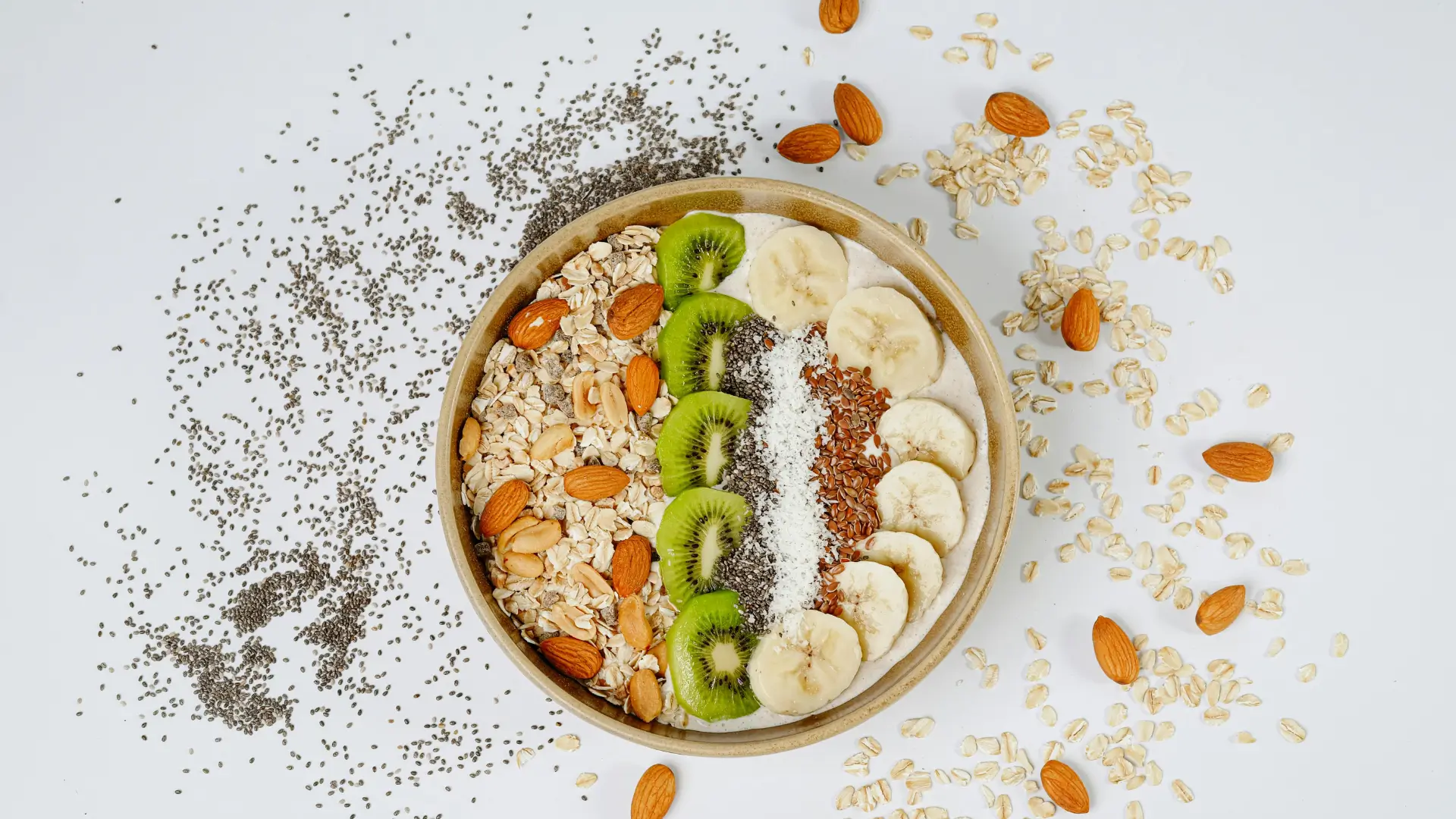
Other macronutrients of interest for mass gain
Proteins play a crucial role in the development and maintenance of muscle mass. They are made up of amino acids, the building blocks of muscle. To stimulate protein synthesis and promote muscle growth, it is recommended to consume around 1.6 to 2.2 grams(2) of protein per kilo of body weight per day, divided into several intakes throughout the day.
High-quality protein sources are best:
- Lean meats (beef, chicken, turkey, certified organic products whenever possible)
- Fish (preferably organically farmed in France)
- Eggs (certified organic)
- Dairy products (yogurt, cottage cheese, products from local organic and/or sustainable farming cooperatives)
- Legumes (lentils, chickpeas, etc.)
Whey, or whey protein, is a particularly a dietary supplement of particular interest to athletes seeking to build muscle mass. Derived from whey, it is an excellent quality protein, rich in essential amino acids and BCAAs (branched-chain amino acids). It is rapidly assimilated by the body, making it a major asset for promoting muscle recovery and growth after exercise.
Although often overlooked, the quantity of lipids is decisive for successful mass gain. Lipids are essential for proper hormonal function, joint health and the absorption of fat-soluble vitamins (A, D, E, K). It is recommended to consume around 1.5/1.8 grams of lipids per kilo of body weight, giving preference to sources of unsaturated fatty acids:
- Oily fish (salmon, mackerel, sardines, etc.)
- Lawyers
- Oilseeds (walnuts, almonds, hazelnuts, etc.)
- Olive, rapeseed and walnut oil
Certain foods, such as peanut butter or tahini (sesame purée), are particularly interesting for weight gain, as they combine vegetable proteins and lipids.
We can't stress this enough, but the most important thing is to eat a balanced diet, especially if you do a lot of sport during the week. If you're worried about losing weight, there are dietary programs for beginners who want to put on weight.
Here is a table summarizing the main points of this article:
| Nutritional benefits : | Interest in weight gain: |
| Rich in complex carbohydrates (60g/100g) with low glycemic index | Long-lasting energy boost, ideal for training sessions |
| Source of fiber (10g/100g) | Promote satiety, transit and digestive health |
| Contains vegetable protein (13g/100g) | Contributes to muscle mass gains with other protein sources |
| Source of vitamins (B1, B6, E) and minerals (magnesium, iron, zinc) | Essential for metabolism, muscle function and recovery |
| Attractive caloric density (350 kcal/100g) | Easily increases total calorie intake to create a surplus |
To find out more :
How do β-glucans specifically impact satiety and insulin resistance?
β-glucans form a viscous gel in the stomach that slows digestion and absorption of glucose, thereby regulating blood sugar levels and preventing insulin spikes.
This action promotes the secretion of leptin (satiety hormone) and can improve insulin sensitivity.
A minimum of 3g of β-glucans/day is required for measurable effects on cholesterol and blood sugar levels. As a caloric surplus, they help maintain better hormonal regulation than refined carbohydrates.
What is the optimal pre/post-workout timing for different intensities?
Pre-workout: 30-45 minutes before with 50-70g for intensive sessions, or 1h before for longer workouts.
Post-workout: within the hour to promote recovery.
For dry training, focus on carbohydrates only around training, keeping flakes for pre-training and fast carbohydrates during exercise.
The medium GI of flakes is perfectly suited to pre-workouts for long-lasting, crash-free energy.
How do oatmeal interact with creatine and other supplements?
No negative interaction between oatmeal, whey, creatine and BCAAs.
Flakes can even be mixed with whey to create a more economical natural "gainer".
The post-workout whey+creatine+flakes combination optimizes protein synthesis and recovery. Flakes provide the carbohydrates needed to transport creatine to the muscles.
How does digestibility vary according to profile (SIBO, sensitivities)?
Oat flakes are rich in FODMAPs and not recommended in cases of SIBO or irritable bowel.
Avenin (a gluten-like protein) can cause bloating in sensitive individuals.
Limited quantities possible on a low-FODMAP diet, but with caution.
If you are one of the risk profiles (confirmed SIBO, IBS, sensitivity to FODMAPs) prefer quinoa, buckwheat or rice for these profiles.
How does oat protein bioavailability compare with that of other cereals?
Oats contain 12-17% protein but, like most cereals, are deficient in lysine.
Its protein quality remains superior to that of rice and wheat, with a better amino acid profile than the average cereal .
Lower bioavailability than animal proteins, but can be improved by soaking/fermentation.
The combination of oats + legumes compensates for lysine deficiency to obtain a complete profile.
What impact do excess calories have on leptin and ghrelin?
With their low GI and soluble fiber, oat flakes help maintain better leptin/ghrelin regulation.
There is a risk of leptin resistance in the event of an excessive surplus, but the fiber in the flakes slows down this adaptation.
Fiber promotes normal leptin secretion compared to refined carbohydrates. So, when it comes to mass gain, they enable a "cleaner" surplus with less hormonal disruption than simple sugars, but caloric excess remains the main factor in hormonal disruption.




